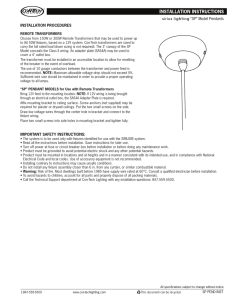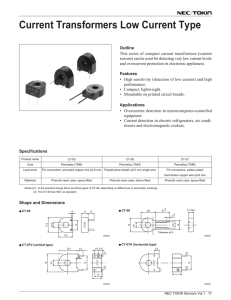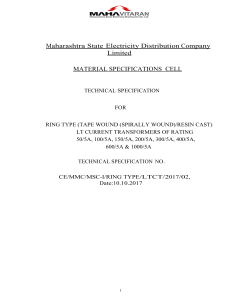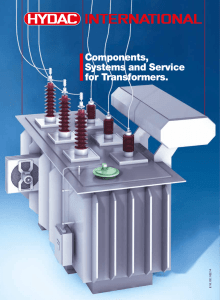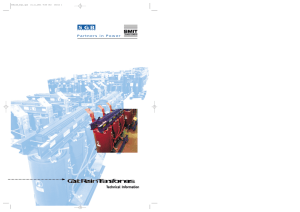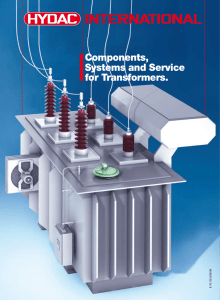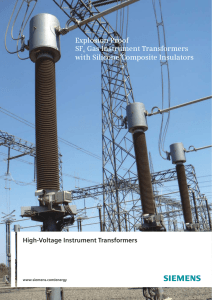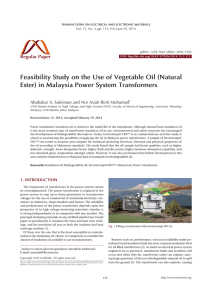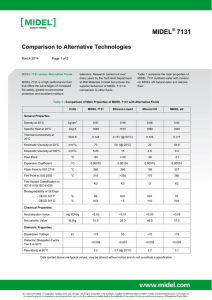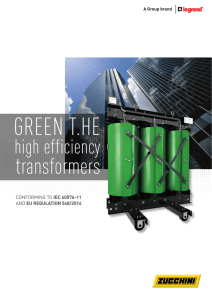Cast Resin Transformer User Manual
advertisement
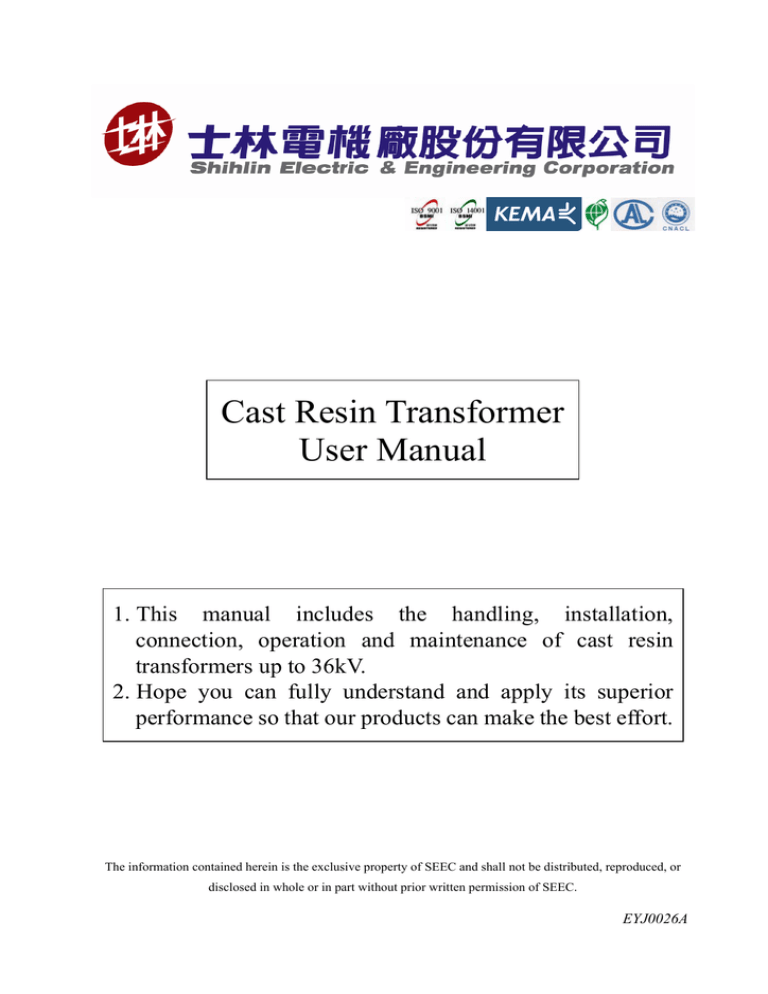
Cast Resin Transformer User Manual 1. This manual includes the handling, installation, connection, operation and maintenance of cast resin transformers up to 36kV. 2. Hope you can fully understand and apply its superior performance so that our products can make the best effort. The information contained herein is the exclusive property of SEEC and shall not be distributed, reproduced, or disclosed in whole or in part without prior written permission of SEEC. 1 EYJ0026A Contents I. Features...................................................... 1 II. Handling .................................................... 2 III. Installation ................................................. 3 IV. Connection................................................. 4 V. Insulation Distance .................................... 6 VI. Commissioning.......................................... 7 VII. Short-time Overload .................................. 8 VIII.Maintenance .............................................. 9 IX. Regular Inspections ................................. 10 I EYJ0026A I. Features Note: Illustration only, components may be varied on demands. 1 EYJ0026A II. Handling 1. Use appropriate slings and hooks to lift cast resin transformers. 2. All lifting lugs should be occupied and angles between slings (or chains) must less than 60 degrees to ensure safe lifting. 3. Every hasty lifting action is prohibited to avoid crashing risks. 4. Handling plenty of transformers, timber planks are suggested as spacers between lower frames to avoid collision. 5. Trussing transformers up, the area contacting to slings should be protected by cloth or similar material. 6. Lifting with a fork, settle forks firmly under the bottom of lower frames, keep low speed steadily, prohibit risky driving such like sudden accelerating or braking. 2 EYJ0026A III. Installation 1. Altitude: The transformer should not be installed above 1000 meters (3300 feet); a higher altitude is specified at the time of enquiry. 2. Ambient temperature: ℃ ℃ ℃ 3. Maximal special ambient temperatures higher than 40℃: 4. Indoor installation in electrical operating rooms or in various sheet-metal enclosures is the preferred method of installation. Sufficient ventilation must be provided by the installation location or the enclosure. In the general case of natural cooling, a total loss of 1kW needs a 3 m3/min air flow to ventilate. 3 EYJ0026A IV. Connection 1. Verify the position identify of tapping links on the three phases are in accordance with the diagram on the nameplate. Make sure that each phase selects the same tapping in series or parallel connection. 2. Confirm tapping links on the coil and the diagram on the nameplate. 3. Connection tightening torque on the HV, LV terminal and tapping links: 4. Select appropriate wire dimension and connection for earthing. 4 EYJ0026A 5. HV Tap changer connections: should be at de-energized (off circuit) i. HV rated voltage (alternative): 22800/11400V : : 7 9 11 1 3 5 8 10 12 7 9 11 2 4 6 1 3 5 8 10 12 2 4 6 ii. HV rated voltage (single): 7 9 11 1 3 5 8 10 12 2 4 6 1 3 5 5 2 4 6 EYJ0026A V. Insulation Distance 1. The minimum clearance between cables and the surface of winding is shown in the following figure. 2. The transformer in metal enclosure must be protected against direct contact. Maintain minimum clearance to the walls according to the following table. 6 EYJ0026A VI. Commissioning 1. Insulation test i. Using a 1000V/2000MΩ above insulation tester (Megger). ii. The approximate values of resistances (based on 25℃) are : 2. Parallel operation: Verify the identity of HV and LV voltages, phase angle difference, vector group and the compatibility of characteristics , especially the impedance voltage. If the impedance voltages are various, verify load distribution of each transformer. 7 EYJ0026A VII. Short-time Overload Acceptable temporary overload curves of various ambient temperature and initial load condition for cast resin transformers 8 EYJ0026A VIII.Maintenance Temperature Note:1. The above are visional inspection, if any strategy is proceeding, be de-energized to keep maintenance staff from danger. 2. If any abnormal phenomenon appears and not be able to find causes and strategies, please contact our sales department. We will provide technical support or local staff service. 9 EYJ0026A IX. Regular Inspections ℃- Note: 1. Annual off load inspection is proposed. 2. If any abnormal phenomenon appears and not be able to find causes and strategies, please contact our sales department. We will provide technical support or local staff service. 10 EYJ0026A

